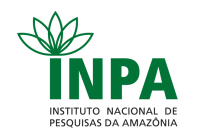Corpo Discente - Egressos
Gelson Dias Florentino
| Título | DINÂMICA ESPAÇO-TEMPORAL E CENÁRIOS DE SUSTENTABILIDADE NA CADEIA PRODUTIVA DO POLO CERAMISTA DE IRANDUBA-AM | ||||||||||||||||||||||||
| Data da Defesa | 22/12/2020 | ||||||||||||||||||||||||
| Download | Visualizar a Tese(3.28MB) | ||||||||||||||||||||||||
Banca
| |||||||||||||||||||||||||
| Palavras-Chaves | Amazônia; Cadeia produtiva; Sustentabilidade; Bioeconomia; Termografia infravermelho | ||||||||||||||||||||||||
| Resumo | A atividade ceramista na Amazônia demanda informações técnico-científicas capazes de apontar indicadores de sustentabilidade em sua cadeia produtiva. O objetivo da tese foi analisar a dinâmica espaço-temporal da cadeia produtiva do polo ceramista de Iranduba, localizado na Região Metropolitana de Manaus (RMM), estado do Amazonas, com base no método do estudo de caso único. Fez-se uma análise sistemática para identificar possíveis elos ou interações relacionadas à cadeia produtiva, usando metodologia baseada no conhecimento de especialistas e resultados de pesquisas científicas. Construiu-se uma figura lúdica e ilustrativa em formato de mandala resumindo os aspectos históricos, caracterizações da matéria-prima e do solo, fontes de energia térmica, influências climáticas, variáveis de natureza econômico-financeira, base de dados sobre o polo ceramista e indicadores de sustentabilidade do negócio, nas perspectivas ambiental, social e econômica. Foram realizadas coleta de pontos georreferenciados (GPS - Sistema de Posicionamento Global) e levantamento de informações referentes ao processo produtivo nas indústrias ceramistas. As atividades de campo incluíram ainda levantamentos em bases de dados disponíveis como SoilGrids, Instituto de Proteção Ambiental do Amazonas (IPAAM), estação automática do Instituto Nacional de Meteorologia (INMET) e Instituto Brasileiro de Geografia e Estatística (IBGE), usando a termografia no infravermelho próximo, para identificar os padrões térmicos do ambiente interno e do entorno das Unidades Produtivas. As imagens termográficas foram tratadas no sistema Flir Tools. A mandala tornou-se uma ferramenta de planejamento com alto potencial de replicabilidade em processos sistêmicos e complexos, como é o caso da cadeia produtiva ceramista de Iranduba. Os padrões termográficos ambientais das Unidades Produtivas reforçam que a termografia infravermelho é uma ferramenta referência em análises de conforto ambiental e diagnóstico das condições térmicas de biomassas residuais capazes de serem utilizadas no aquecimento dos fornos. As oportunidades de uso alternativo de biomassas residuais em indústrias ceramistas na Amazônia apontam exemplos de resultados obtidos na tese como estratégia de mitigação de riscos e impactos socioambientais, reduzindo a pegada de “lixo” em corpos hídricos e/ou aterros sanitários e, principalmente, a redução de pressão de uso de material lenhoso oriundo da Floresta. O potencial bioeconômico dos recursos biológicos disponíveis e subaproveitados apontam a necessidade de reestruturação da atividade ceramista no município de Iranduba, com a incorporação de ferramentas biotecnológicas que promova a fabricação de bioprodutos e a sustentabilidade do setor. Conclui-se que a diversidade geológica de argilas e a localização estratégica das empresas favorecem a fabricação e a distribuição de produtos sustentáveis como tijolos e telhas, além da fabricação de potes de argila, como oportunidades para consolidação da bioeconomia regional. Os elementos da cadeia produtiva ceramista de Iranduba apontam indicadores para aprimoramento dos padrões de produção e o fortalecimento das relações de demanda-oferta de produtos competitivos e sustentáveis, a partir do comprometimento de stakeholders, consumidores, pesquisadores, extensionistas e sociedade em geral. | ||||||||||||||||||||||||
| Abstract | The ceramics activity in the Amazon requires technical and scientific information capable of pointing out sustainability indicators in its production chain. The objective of the thesis was to analyze the spatio-temporal dynamics of the production chain at the Iranduba ceramics pole, located in the Metropolitan Region of Manaus (RMM), state of Amazonas, based on the single case study method. A systematic analysis was carried out to identify possible links or interactions related to the production chain, using a methodology based on the knowledge of experts and results of scientific research. A playful and illustrative figure in the form of a mandala was constructed summarizing the historical aspects, characterizations of the raw material and the soil, sources of thermal energy, climatic influences, variables of an economic and financial nature, a database on the ceramic pole and indicators business sustainability, from an environmental, social and economic perspective. Collection of georeferenced points (GPS - Global Positioning System) and survey of information regarding the production process in ceramics industries were carried out. The field activities also included surveys of available databases such as SoilGrids, Amazonas Environmental Protection Institute (IPAAM), automatic station of the National Meteorological Institute (INMET) and Brazilian Institute of Geography and Statistics (IBGE), using thermography in the near infrared, to identify the environmental thermal patterns of the Productive Units. The thermographic images were treated using the Flir Tools system. The mandala has become a planning tool with high potential for replicability in systemic and complex processes, as is the case with the ceramic production chain in Iranduba. The thermographic patterns of the internal environment and the surroundings of the Production Units reinforce that the infrared thermography is a reference tool in analyzes of environmental comfort and diagnosis of the thermal conditions of residual biomass capable of being used in the heating of the ovens. The opportunities for alternative use of residual biomass in ceramics industries in the Amazon point to examples of results obtained in the thesis as a strategy to mitigate risks and socioenvironmental impacts, reducing the “garbage” footprint in water bodies and / or landfills and, mainly, the pressure reduction for the use of woody material from the Forest. The bioeconomic potential of available and underutilized biological resources points to the need for restructuring ceramic activities in the municipality of Iranduba, with the incorporation of biotechnological tools that promote the manufacture of bioproducts and the sustainability of the sector. It is concluded that the geological diversity of clays and the strategic location of the companies favor the manufacture and distribution of sustainable products such as bricks and tiles, in addition to the manufacture of clay pots, as opportunities for consolidating the regional bioeconomy. The elements of the ceramic production chain in Iranduba point to indicators for improving production standards, strengthening the demandsupply relations of competitive and sustainable products, based on the commitment of stakeholders, consumers, researchers, extension workers and society in general. | ||||||||||||||||||||||||
Parceiros

























